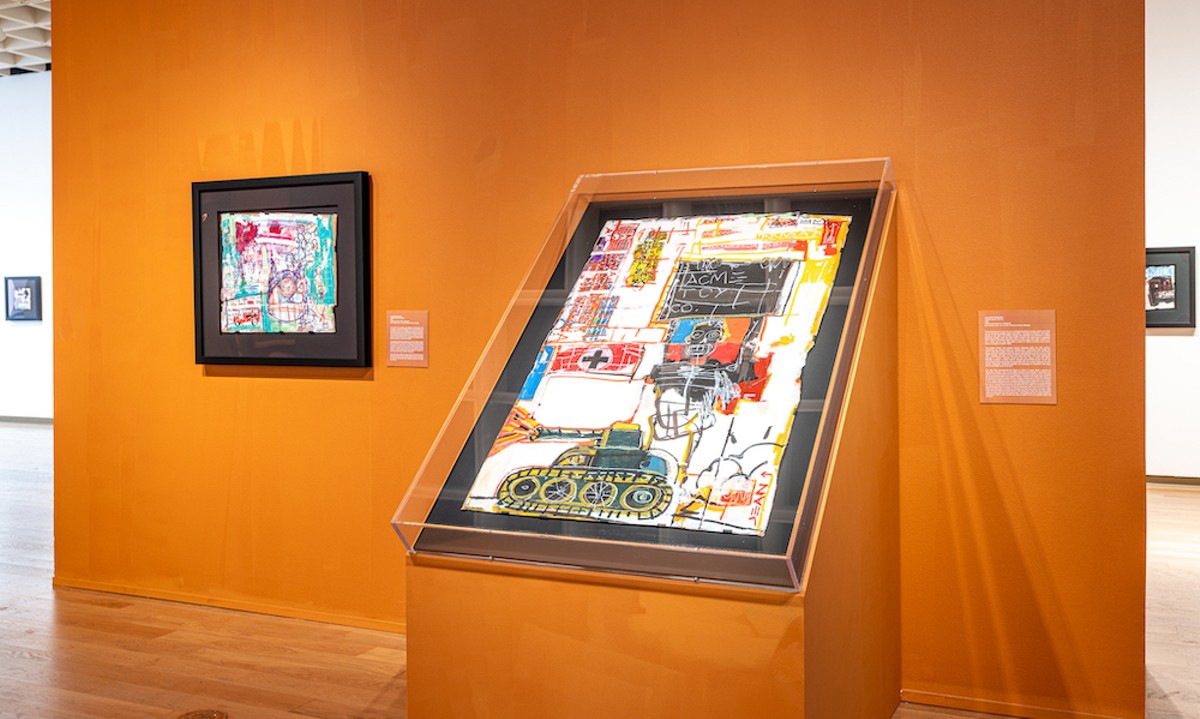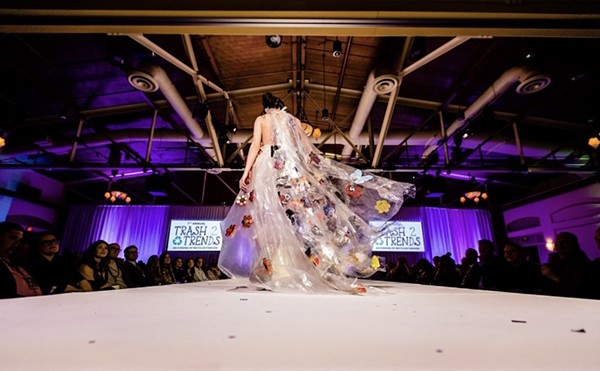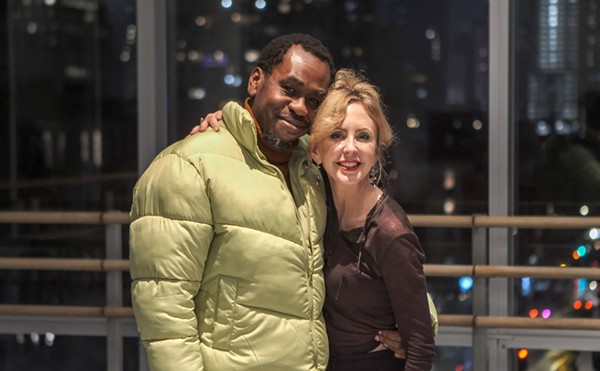The strange saga of Orlando Museum of Art's Heroes & Monsters: Jean-Michel Basquiat, The Thaddeus Mumford, Jr. Venice Collection took yet another strange turn last week, with confirmation from the New York Times that the FBI has opened an investigation into the provenance of the "previously unseen" Basquiat works featured.
The Times reported that the FBI's Art Crime Team issued a subpoena seeking "any and all" communications between museum employees and the owners of the paintings "purported to be by artist Jean-Michel Basquiat." The Bureau also asked for communications between the museum and its art world experts.
This new story, coupled with earlier reporting back in February that initially questioned the authenticity of the 25 paintings that make up Heroes & Monsters, makes the news that OMA is ending the exhibition at the end of this month — almost a year ahead of the originally scheduled ending in June 2023 — somewhat less surprising. And perhaps less than coincidental. (When reached for comment this week about the curtailed run of Heroes, OMA Director of Marketing and Communications Emilia Bourmas-Fry stated that the owners are touring the exhibit to Italy.)
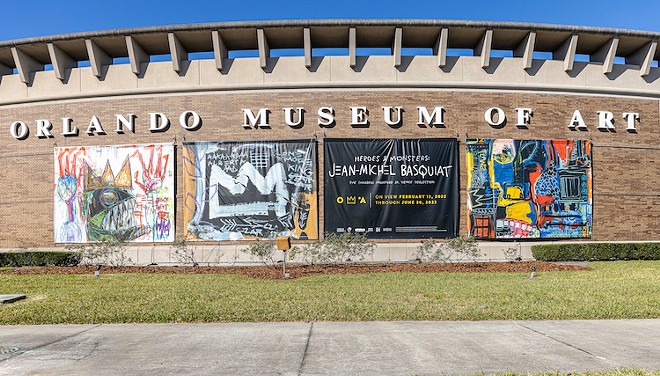
What started as a cultural coup for Orlando's arts community in February has become something very different. From a blockbuster triumph the night of the opening — OMA's attendance was up 500% compared to its average, they reported — the exuberance over Heroes and Monsters gradually deflated with each new question about the authenticity of these mystery Basquiats.
Brett Sokol's articles for the Times have openly questioned the veracity of the 25 Basquiat works in the exhibition, which were claimed to have been "discovered" in a storage unit belonging to television writer Thaddeus Mumford — who is said to have purchased the works from the artist directly in 1982 — where they sat for decades, untouched and unseen.
Sokol's reporting was damning, and certain inconsistencies in the works were evident even to the untrained eye, most namely the FedEx graphic font found on two of the works on cardboard, a font that wasn't used by the company until the 1990s — several years after the artist's death in 1988. You can see this evidence with your own eyes by scrutinizing the front of the piece "One More King (Czar)."
Friends of Basquiat and fellow artists made dubious remarks after seeing the exhibition catalog, while Basquiat's family remained silent on the matter — though they later unveiled their own retrospective, King Pleasure, in April at the Starrett-Lehigh Building in New York City. "When I saw the images I knew they were fake," said an artist and close friend of Basquiat to OW on condition of anonymity, "but no one asked me that."
Orlando Weekly even received a tip in the weeks leading up to the exhibit opening that questions were being asked about the provenance of the pieces. Our tipster claimed that a gag order had been handed down to staff by museum higher-ups — a claim OMA director Dr. Aaron De Groft has strenuously denied, though sources speaking on the condition of anonymity to OW have said otherwise — and that computers had been seized from the museum by the FBI.
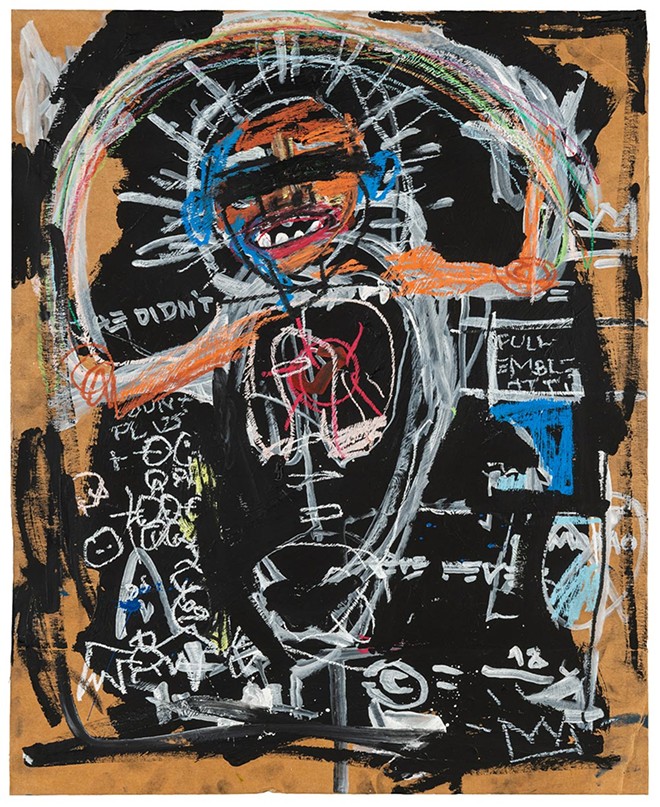
Casting further doubt are the identities of the owners of these works: Michael William Force and John Leo Mangan III. It was originally claimed by De Groft that the owners wanted to remain anonymous due to the enormous (purported) value of the artwork. The reveal isn't a pretty one, as both men have years' worth of shady dealings between them, dating back to the 1970s — with jail time to show for it. The third co-owner is trial attorney Pierce O'Donnell (who counts Force and Mangan among his clients).
Since the first New York Times article early in the year, further discrepancies and details have come to light via a decade's worth of coverage of Force's and Mangan's dealings by true-crime blogger Anita Senkowski. As well, a number of trusted sources on background described behind-the-scenes feelings of trepidation from and about many of the principal characters and organizations involved in the exhibit's opening.
Force and Mangan have been involved in a number of shady dealings — stock manipulation, drug trafficking, predatory loan relief scams, numerous real estate and art forgery schemes — establishing a consistent pattern of questionable endeavor that has gone undeterred to this day. The question can reasonably be asked then, is Heroes and Monsters any different?
Senkowski reached out to staff at OMA to inform them of who and what they were dealing with. To date, she says, no one has responded. Was De Groft — who has only been in his current position for one year — aware of Force's and Mangan's backgrounds? If not, why not? For that matter, was OMA's Basquiat exhibit predicated on the display of co-owner Pierce O'Donnell's similarly unauthenticated Jackson Pollock work, The Comstock Pollock, 1950 (Pink Spring), which is slated to be exhibited at OMA in the near future?

The principal players have been trying to pull this off in various forms with other museums, galleries and auction houses for some time now. So why did OMA accept it? "If the New York Times can't get the persons' real names, who did? Who decided to use those names?" wonders Senkowski. "Do the people at the museum know who they are? Did they know before they accepted this thing?"
Based on the patterns of most of the individuals involved any, if not all, documents of proof and authenticity are in serious question. And the same goes for the involvement of leading Basquiat authorities in this exhibit. Based on sources who spoke to OW on the condition of anonymity, two of the foremost authorities on the works of Basquiat, Diego Cortez and Jordana Moore Saggese, Ph.D., had little to do with Heroes & Monsters, and their inclusion in exhibition materials is misrepresented. (Cortez served on the authentication committee of the estate of Jean-Michel Basquiat until it ceased operation in 2012, and Prof. Saggese is an art historian and acknowledged expert on Basquiat's works.)
An interview with Saggese included in the exhibition catalog is said to have never taken place and to be a complete fabrication. Interestingly, it does not appear in the catalog's table of contents. Saggese's involvement was misrepresented to the extent that the New York Times printed a correction on March 2 noting that the February article originally described her input incorrectly as attributing some of the 25 works to Basquiat, when in actuality she was unable to attribute nine of the paintings to him, with nothing more on the matter.
Saggese has not directly responded to anything in regards to Heroes & Monsters, while Cortez passed away in late 2021. However, Saggese's legal representatives, Cypress LLP, reached out to OW to express their concerns in regards to our own follow-up article ("Questions and doubts overshadow Orlando Museum of Art's Basquiat show 'Heroes and Monsters,'" Feb. 16), stating, "Dr. Saggese did not definitively attribute a single work to Basquiat."
The attorneys' statement continues, “Notwithstanding, the expressly confidential nature of the Reports and the fact that they do not (on any reasonable construction) authenticate all or even some of the Basquiat works in question, Dr. Saggese’s Reports have been grossly misused and misrepresented by Mr. O’Donnell and his associates in order to give credibility to the Exhibit.
“In 2019, Mr. O’Donnell asked Dr. Saggese to participate in an exhibition of the Basquiat Venice Collection. She declined. She also reiterated that her prior Reports were confidential and not to be shared with third parties. Nevertheless, in February 2022 (shortly before the opening of the Exhibit), Dr. Saggese heard rumors that Mr. O’Donnell and Dr. Aaron De Groft, the Director and CEO of the Orlando Museum of Art, had falsely claimed that she attributed each work in the Exhibit to Basquiat. Dr. Saggese contacted both Mr. O’Donnell and to Dr. De Groft to ensure that they were not sharing the Reports or misrepresenting her opinions. Both denied doing so to her. Yet neither were truthful. As it transpired, Mr. O’Donnell invented an entirely fictionalized narrative with Dr. Saggese that spans several pages of the exhibition catalog. He also misleadingly quoted from Dr. Saggese’s Reports to suggest that she concluded that all of the OMA works were by Basquiat.
“Mr. O’Donnell even went so far as to provide incomplete and misleading extracts of Dr. Saggese’s confidential Reports to the New York Times. The use of her draft and unfinished Reports in a New York Times article dated February 16, 2022 to attribute the OMA works to Basquiat was in flagrant breach of confidence and grossly misrepresented her endorsement of the Basquiat Venice Collection.
“Unfortunately, Dr. Saggese did not learn of the full scope of the misrepresentations concerning her opinions until numerous media outlets, including the New York Times, incorrectly reported that Dr. Saggese attributed all of the works to Basquiat.”
This could go on for many more pages — our and others' research has been extensive, and unpleasant — but the point has been made, both here and in the Times, with plenty of reasonable doubt to back it up. As much as the thrill of the "next big thing" coming to town can be, it's painful to think that it may be smoke and mirrors for dubious purposes. Over the years, Orlando has sprouted many art venues that meet the public demand for art from the far-out to the traditional, and they do it well and with heart and soul. This could be — is — a step backward.
In the end, even barring any new revelations, Heroes & Monsters didn't do much to advance our knowledge of Jean-Michel Basquiat, nor, certainly, the reputation of the Orlando Museum of Art or Orlando itself. Exploring the legacy of an artist, taking the good with the bad, is part of the historical and educational mission of any arts institution that serves the public good. OMA had the chance to do that with these works, but chose not to. This exhibition didn't have to be the slow-motion car crash it's turning out to be.
Additional reporting by Alex Galbraith, Matthew Moyer and Jessica Bryce Young.

